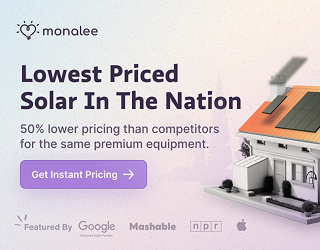Off-Grid, Clean Energy Access Market Valued At $12 Billion
By Justin Guay
One in five people around the world, approximately 1.3 billion people, lack access to electricity.
The Sierra Club just released a new report — Clean Energy Services For All (CES4All) – – showing that off-grid clean energy is the right tool for the energy access job. That’s because it’s the fastest, cheapest, and most effective means of ending energy poverty – and it’s going to create a $12 billion annual industry by 2030.
Working with Evan Mills of Lawrence Berkeley National Lab and Stewart Craine of Village Infrastructure Angels, we have provided one of the first estimates of future growth for the rapidly expanding clean energy access market. Today, excluding grid extension, this market is estimated to be a $200-250 million industry annually. However, we project a 26 percent compound annual growth rate that will enable growth that reaches a $12 billion annual market by 2030 – when universal electrification is achieved. To put that in perspective, the U.S. residential market for solar in 2013 was only $3.76 billion.
It turns out our central thesis has been right all along – small is big.
Central to our ‘CES4ALL’ model is the notion that energy efficiency unlocks the energy access ladder. Energy efficiency measures that are currently available allow energy access to be delivered for 50-85 percent less energy input, which enables dramatically reduced capital expenditure.
From off-grid LED lighting to “Skinny Grids,” we can now provide energy access with a fraction of the amount of power we used to need. More importantly, we can unlock affordable initial interventions — like lighting, mobile phone charging, fans, and TVs plus a small amount of agro processing — to help people get onto the energy ladder today rather than forcing them to wait decades for a grid extension that may never come.
As incomes expand and markets evolve, these populations will upgrade and expand their energy services, in turn creating a bottoms up, distributed, democratized grid.
It’s important to understand that we aren’t just imagining this clean energy market growth – it’s already happening. The fact is that the off-grid energy market is growing rapidly, with estimates of 95 percent compound annual growth rates in sub Saharan Africa alone. In Bangladesh, 80,000 solar home systems are being installed every single month while neighboring India has promised solar for all by 2019.
Similar to how solar leasing unlocked the market for residential solar use in the United States, this off-grid market has been unlocked by business and financial model innovations, like mobile money-enabled “pay-as-you-go” systems. These innovations have primed the off-grid sector for further rapid growth, similar to what the mobile phone industry experienced a decade ago.
But if there is one message we need to leave you with it’s this: show us the money!
In order for the market to reach its full potential by 2030, entrepreneurs need financing now. We estimate that financial need to be roughly $100 million in new investments in off-grid clean energy manufacturers over the next three years. The investment needs of consumer finance companies in this market will require even larger investments — $400 million over roughly the same time period.
Combined, approximately $500 million is needed in the next two to three years, consistent with a letter from industry to the World Bank.
In short, this off-grid energy market has a tremendous opportunity to catalyze a solar revolution for the masses — one that will help democratize energy, create local jobs, and decarbonize new power systems in one fell swoop. The only thing standing in its way is access to the financing to make it happen. Private investors are already stepping up to the plate with $45 million invested in just the past four months, but international financial institutions like the World Bank are nowhere in sight.
It’s time we held these development institutions accountable. It’s time they finally built the equitable, sustainable, and democratic systems that distributed clean energy make possible. It’s time for clean energy access for all.
About the Author: Justin Guay is a Washington Representative for the Sierra Club. Based in Washington D.C., he focuses on energy lending reform at International Financial Institutions and global efforts to transition energy systems beyond coal. In his previous position at the Sierra Club, Justin lived and worked in Mumbai, where he collaborated with Indian NGOs and for-profit companies to develop a model of clean energy distribution in rural areas.
Have a tip for CleanTechnica? Want to advertise? Want to suggest a guest for our CleanTech Talk podcast? Contact us here.
Sign up for our daily newsletter for 15 new cleantech stories a day. Or sign up for our weekly one on top stories of the week if daily is too frequent.
CleanTechnica uses affiliate links. See our policy here.
CleanTechnica's Comment Policy
